Saving the North Atlantic right whale - North America
Don't fail our whaleFacts about North Atlantic right whales
Facts about North Atlantic right whales
North Atlantic right whales are a species of baleen whale that live in the North Atlantic Ocean. They socialise and mate with each other in surface active groups (SAGs), visible on the surface of the water. They both eat and support plankton growth through the nutrients in their waste, promoting a healthy life cycle in the ocean. This plankton is very important to our atmosphere as it captures large amounts of carbon dioxide and produces nearly half of the world’s oxygen.
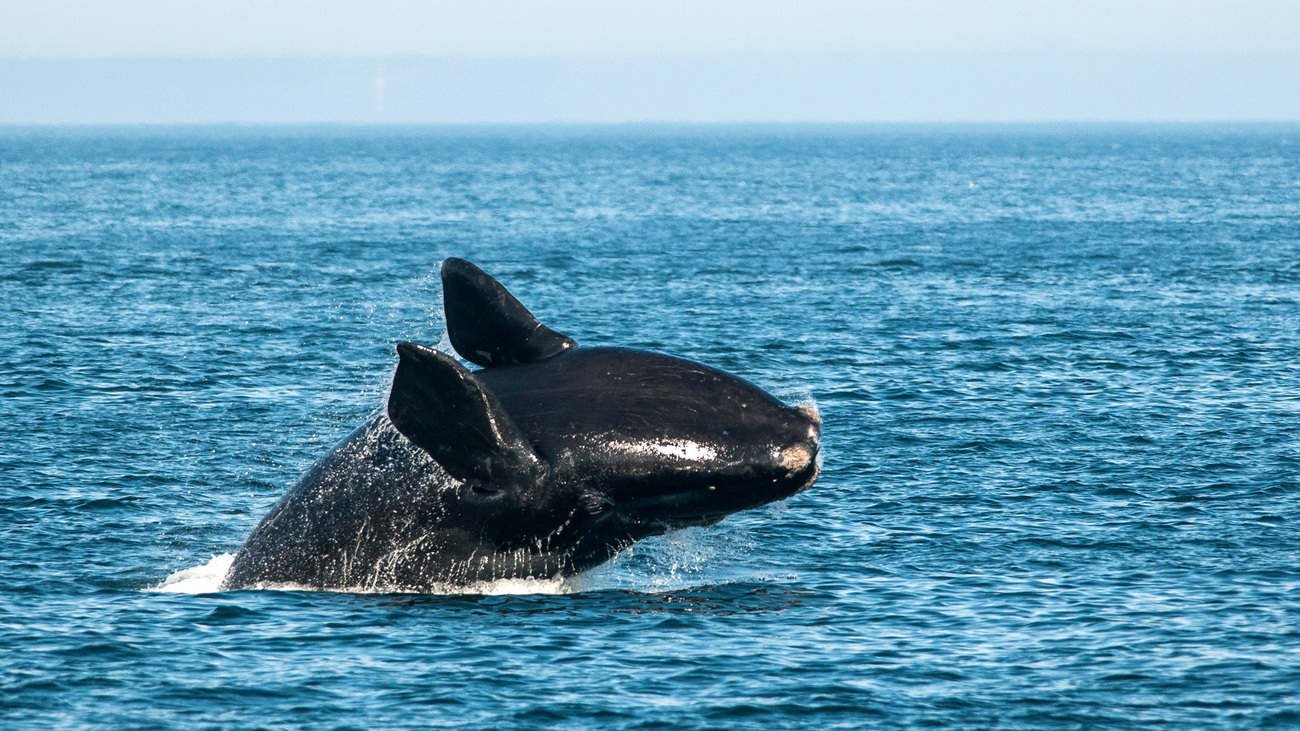
As such, protecting North Atlantic right whales is an incredibly vital task. At IFAW, we spearhead and participate in various projects to help the right whales. From researching their behaviours and movement patterns to working with governments to slow vessels and reduce entanglement, we are helping to save individuals and build a better future for North Atlantic right whales.
North Atlantic right whales are critically endangered
The IUCN changed North Atlantic right whales’ status from endangered to critically endangered in 2020 due to its declining population. Increased mortality rates and below-average reproductive rates are the main reasons for the population decline, with many whales dying before the age of 45 despite having a life expectancy of 70.
North Atlantic right whales were nearly hunted to extinction in the 1800s. In 1935, hunting these whales became illegal, but their numbers have yet to recover as new threats arose.
What are the biggest threats to North Atlantic right whales?
The biggest causes of mortality in North Atlantic right whales are entanglement and vessel strikes, and climate change is an underlying cause as well.
When caught in the vertical ropes used in commercial fishing, whales experience both physical and emotional damage. They risk drowning or getting wounded and endure high levels of stress.
Vessel strikes are another significant threat, not least because of how common they are. With many boats travelling at high speeds, right whales’ slow movements, and how difficult they are to spot on the ocean’s surface, there is a high risk of collision between marine vessels and right whales. Strikes from vessels of all sizes can easily cause blunt or sharp trauma.
Another major threat to North Atlantic right whales is climate change. The ocean is very sensitive to temperature changes and any rises can quickly affect which plants, including phytoplankton, grow where. This, in turn, affects zooplankton and the whales who feed on them. As the climate changes, it becomes more difficult to predict where whales may travel as their food distribution changes, which can exacerbate threats like vessel strikes.
Only about 370 North Atlantic right whales are left
There are only around 370 individual North Atlantic right whales left, fewer than 70 of which are breeding-age females. With so few North Atlantic right whales left, IFAW tracks new calf births every year.
To grow the population, 50 North Atlantic right whale calves need to be born each year, so it’s very important to keep the reproductive females safe and breeding successfully. However, it is virtually impossible for 50 right whale calves to be born in one season, given the threats the species currently faces.
Only 11 North Atlantic right whale calves were born in the 2025 season
There were only 11 calves born during the 2025 North Atlantic right whale calving season. While 20 new calves can be considered a productive calving season, we ideally need at least 50 new calves per year to recover and grow the whale population.
Here are some numbers from recent years:
North Atlantic right whales have tiny crustaceans living on their heads
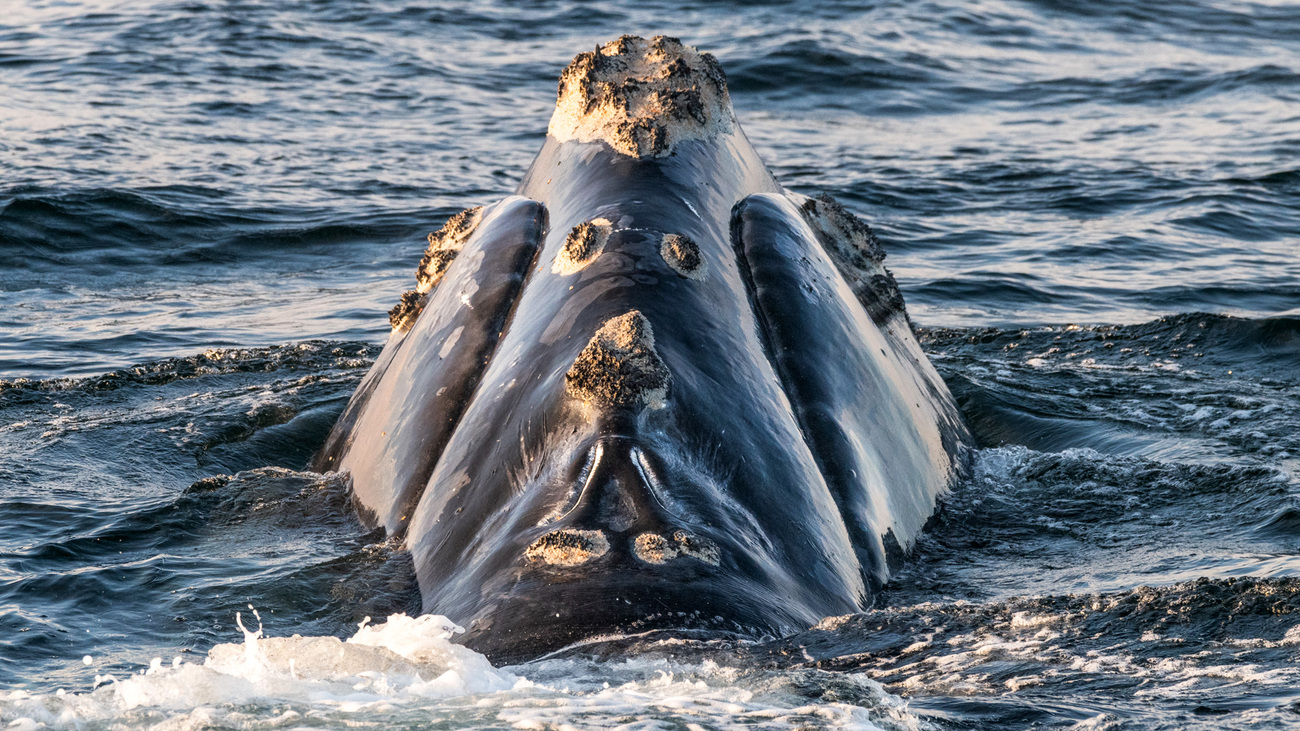
The rough patches of skin on North Atlantic right whales’ heads are called callosities. These patches appear white from a distance, but the skin itself isn’t white. The ‘whale lice’ are. These whale lice are tiny crustaceans called cyamids that eat the algae that settle on the whales’ skin.
Every whale has a unique pattern of rough skin patches where the whale lice gather. Researchers use this as a way to identify and track individual whales.
What do North Atlantic right whales eat?
North Atlantic right whales are baleen whales. This means they feed by taking large amounts of water into their mouths and pushing it through their baleen filters. This catches zooplankton, krill, and other small crustaceans, which the whales then eat. Because they’re so large, they have to eat massive amounts each day—about 1,000 to 2,500 kilograms (2,200 to 5,500 pounds).
How big are North Atlantic right whales?
When a calf is first born, it’s around 4.2 metres (14 feet) in length. By the time it reaches adulthood, it can grow to 15.8 metres (52 feet) long. At full size, they can weigh up to 63,500 kilograms (140,000 pounds).
North Atlantic right whales are experiencing an Unusual Mortality Event
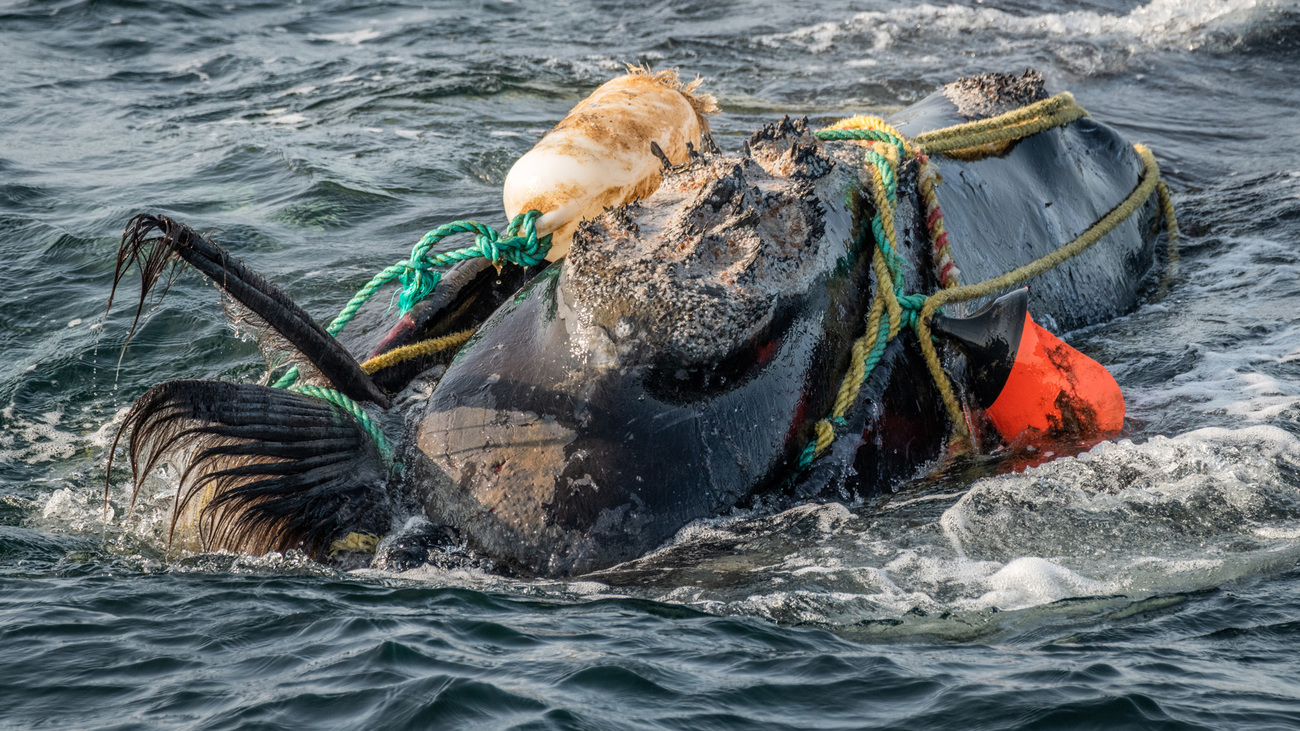
An Unusual Mortality Event (UME) is declared when mortality rates in a marine mammal species rise significantly for unusual or unknown reasons. A UME for North Atlantic right whales began in 2017 and is currently ongoing because more than 20% of the population has been affected by death, injuries, and sickness. As of May 2025, this includes 41 mortalities, 39 serious injuries, and 77 sublethal injuries or illnesses—157 whales in total.
The human-induced threats causing the UME poses a serious threat to this species’ survival, because more whales are dying or becoming seriously injured each year than are being born, which could quickly result in extinction.
How fast are North Atlantic right whales?
North Atlantic right whales are known for moving fairly slowly. They usually swim at around 9.6 kilometres (six miles) per hour. This is one of the reasons they are so vulnerable to vessel strikes. Boats travel so fast that whales struggle to move out of the way in time.
North Atlantic right whales don’t have dorsal fins
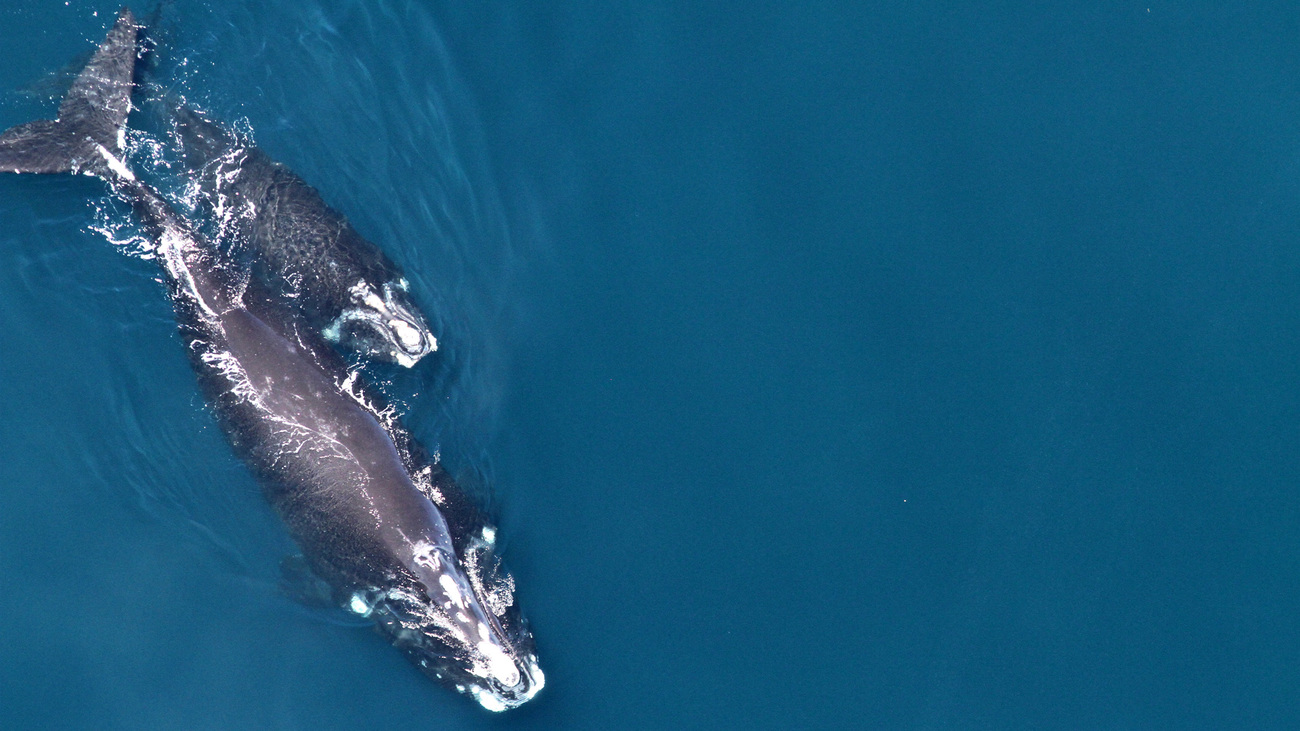
North Atlantic right whales have pectoral flippers on their sides, but they don’t have dorsal fins on their backs. This makes them much harder to spot in the water compared to many other whales. It also contributes to vessel strikes, because many boats can’t spot these whales from a distance.
When they are close enough to be spotted, the boats are usually travelling too quickly to manoeuvre around them.
North Atlantic right whales aren’t the only whale species impacted by vessel strikes. Our research shows that lowering ship speeds by just 5% to 10% in Europe would reduce vessel strikes and ocean noise. Learn more and sign our Blue Speeds petition to make the seas safer for right whales.
North Atlantic right whales have super thick blubber
North Atlantic right whales are marine mammals and need to maintain a certain body temperature to survive in the ocean. To keep their temperature at around 36 degrees Celsius (96.8 degrees Fahrenheit) even in cold waters, they have an extremely thick layer of insulating blubber—up to 30 centimetres (or one foot) thick.
How did North Atlantic right whales get their name?
The common name ‘North Atlantic right whale’ was unfortunately coined by the commercial whaling industry that over-hunted the species to near extinction.
Because of their low swimming speed, tendency to stay near the surface of the water, and their valuable blubber and baleen, they were known as the ‘right’ whales to hunt. Other species of right whales are differentiated by where they live—there are three species, the North Atlantic right whale, North Pacific right whale, and Southern right whale.
What shape is the North Atlantic right whale’s blowhole?
North Atlantic right whales have split blowholes that look a little bit like nostrils. They send jets of water upwards at a slight angle, making a large, V-shaped water spout. This is unique among whale species.
How is IFAW working to protect North Atlantic right whales?
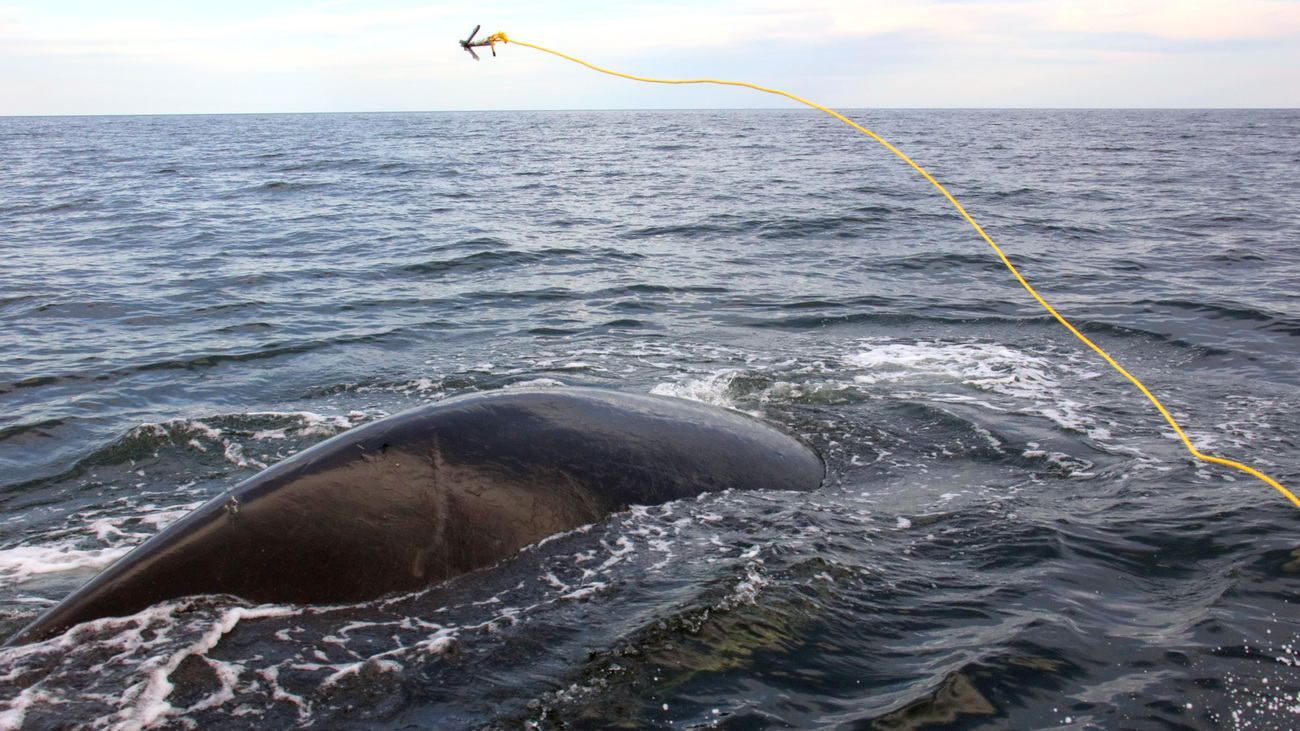
At IFAW, we are tackling the North Atlantic right whale crisis from multiple angles. We collaborate with scientists, fishermen, governments, and policymakers to research, develop strategies, and advocate to help save North Atlantic right whales.
In 2019, IFAW veterinarian Dr. Sarah Sharp’s research revealed that nearly 90% of determinable right whale deaths were caused by entanglement and vessel strikes. With only 370 or so right whales left, saving every individual makes a difference. Through education, advocacy, and grassroots engagement, IFAW’s campaign in the US and Canada drives public awareness, pushes for regulatory change, and promotes innovative solutions to save these whales.
One such innovation includes Automatic Identification Systems (AIS) technology. This technology will help reduce vessel strikes by delivering targeted safety messages and navigation data directly to mariners traveling through whale habitats. All commercial vessels 65 feet and longer are required to have the AIS collision avoidance system, and many others carry it voluntarily.
We’re also working with partners to develop fishing technology that reduces the threat of entanglement. Innovative solutions like on-demand or ‘ropeless’ gear allow fishermen to continue their livelihoods while also keeping whales and other marine life safe.
In addition, IFAW’s marine mammal rescue team, based on Cape Cod, is ready to intervene at a moment’s notice when a whale is found entangled or in poor health. Our team of experienced veterinarians and biologists work alongside NOAA and the Center for Coastal Studies to support challenging cases. We have a custom remote device capable of administering sedatives to slow whales and improve the chances of a successful disentanglement. Our team also regularly performs necropsies on deceased whales to contribute to research.
Sign our petition >>
Related content
Every problem has a solution, every solution needs support.
The problems we face are urgent, complicated and resistant to change. Real solutions demand creativity, hard work and involvement from people like you.